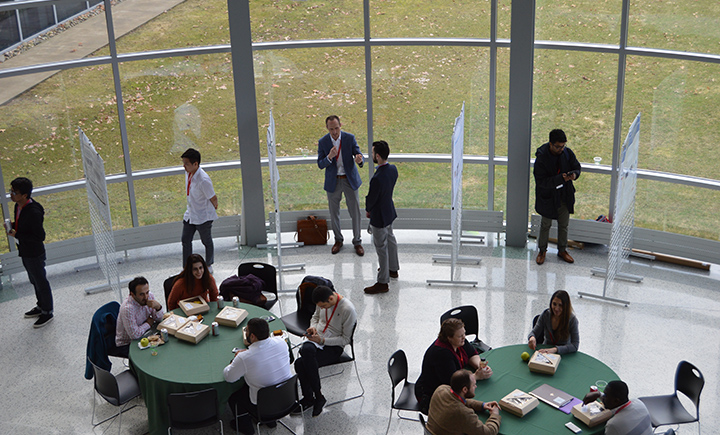The First Northeast Regional Conference on Complex Systems (NERCCS 2018)
“Complex systems science is the way we see and understand the world.”

What caused the Arab Spring? How can we slow the spread of the Ebola virus? What makes the American political system so volatile in 2018?
These questions and more were discussed at the First Northeast Regional Conference on Complex Systems (NERCCS 2018) sponsored by the Center for Collective Dynamics and Complex Systems (CoCo).
In fact, those questions were all discussed in just one keynote talk by Yaneer Bar-Yam from the New England Complex Systems Institute. Other keynote speakers asked questions about whether endothelial cells dream of eclectic shape (Katie Bentley from Boston University), if robots can be designed to work collectively (Kirstin Petersen from Cornell University), how to best combine the philosophy and science of change (Patrick Grim from Stony Brook University) and many more.
So, how can all these things be related? It’s because complex systems are, well, complex. Unlike statistics that say one very clear thing, complex systems attempt to see how each factor influenced or changed a situation.
Hiroki Sayama, the conference chair and a professor from the Systems Science and Industrial Engineering Department, describes complex systems science as “the way we see and understand the world.”
A properly developed system can tell us which factor had the most influence, what factors need to change to adjust the outcome and what we can expect to happen in the future.
The conference itself included numerous keynote and invited speakers from across the northeastern United States, parallel sessions, poster presentations and a day for young researchers and post-docs to network.
The parallel sessions brought together various researchers to provide 15-minute presentations on subjects including network structure, nonlinear dynamics, data-driven approaches, network dynamics, social networks, self-organization and collective behavior, social dynamics and information.
Papers that were presented at the conference also had the opportunity to be published in the first-ever CoCo academic online journal titled Northeast Journal of Complex Systems (NEJCS).
The best student paper award went to Brennan Klein from Northeastern University. His paper was titled “Quantifying the Causal Structure of Complex Networks.” The best poster award went to Bing Yao from Pennsylvania State University for her poster “Numerical Simulation of the Conduction and Propagation of Spatiotemporal Electrodynamics on the Heart Surface.”
For those interested in the content of the conference, all of the keynote and invited speakers’ talks are available to watch on the CoCo Vimeo page. There’s also a twitter timeline that follows the events of the conference.
Some of the biggest questions of our time can be looked at through complex systems science, and conferences like this one help bring that to light, Sayama said.

